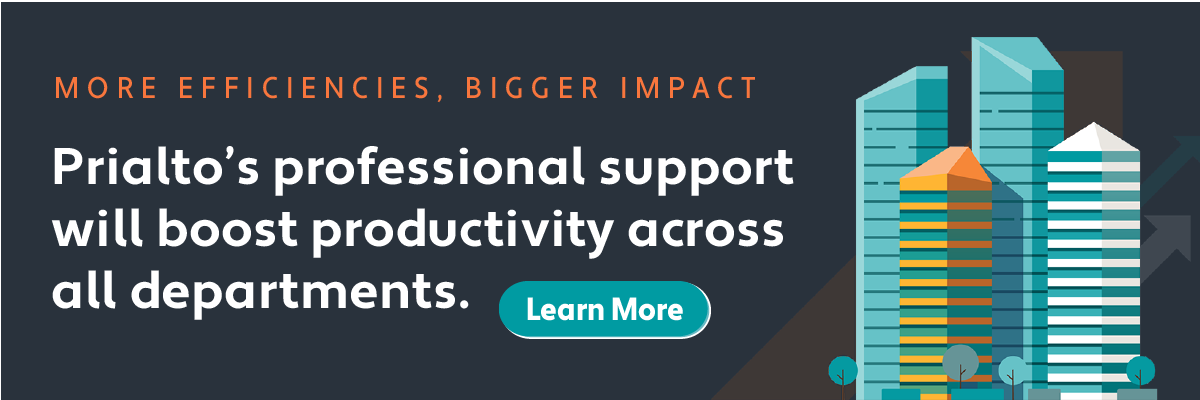Are you getting all that you can out of your CRM platform? If not, read on.
Here's how businesses can benefit from a properly implemented CRM:
- Customers spend 20-40 percent more when they engage with a company using a CRM
- Companies that use a CRM increase retention and customer satisfaction by 47 percent
- Conversion rates rise by up to 300 percent for CRM users
- The average ROI for a CRM is $8.71 for every dollar spent on the platform
Is this what your business is getting out of its CRM implementation?
The beauty of the CRM platform is that it enables you to store all your customer data in one place, automate communications, personalize marketing campaigns, identify sales opportunities, record service issues, and more. It helps you to create sales pipelines and build customer relationships.
If you're not enjoying those benefits yet, you're not alone. Multiple industries struggle with their CRM, with shocking 63 percent failure rates.
If your CRM is not living up to its potential, some best practices can help you get back on track.
Make Adoption as Easy as Possible
According to Forrester Research, lack of user adoption is the number one obstacle to successful CRM implementations. Second is lack of training.
Here are some ways to increase adoption.
- Training. The first one is easy--if lack of training is the second biggest obstacle to CRM use, it's likely a big contributor to low adoption. Contextualize training to the various users' roles so that as they learn, they are doing their jobs and can see the value as they work.
- Integration. Ensure your CRM is compatible with any other technology you use, like email marketing and ERP platforms. The more the CRM integrates with user workflows, the more it will be used.
- Support. Teams with a go-to CRM expert that can troubleshoot and answer questions are more successful than those that leave employees to fend for themselves.
- Implement in phases. Break your implementation and training into steps, like a 30-60-90-day plan to allow users to adopt the tool in bite-size sprints rather than in a single marathon.
Ensure Data Integrity
Consistent, reliable data critical to the success of your CRM implementation. Data that is inconsistent, missing, or (gasp) inaccurate will frustrate users, lead to mistakes with customers, and ultimately kill adoption. Each time data is duplicated or moved, there is the potential for corruption or loss. There are some ways to monitor and improve CRM data integrity.
- Prevention. Prevent bad data in the first place. Use strict naming conventions, required fields, and validation rules.
- Detection. Create reports for analysis. If you suspect that you do have problems, use filters to find faulty records. You could, for example, create a report of contacts where the email address does not exist.
- Repair. If you have missing and/or inaccurate data there are variety of ways to repair including using data cleansing software, exporting to excel and using formulas for mass corrections or manually updating records within your CRM.
- Archive. Archive old data. Define a standard for what makes a record out of date and archive regularly to keep the list lean and clean.
Make it Customer-Centric
Delighted customers will do a lot to boost CRM utilization and help you realize the financial benefits the platform can deliver. Customers spend 48 percent more when they have a personalized, efficient experience. CRMs are sometimes designed to streamline internal processes first, which doesn't always translate well for customer interactions.
- Build buyer personas. Detail your best customers' profiles—age, gender, interests, where they get information, and the core problems that drive them to your product.
- Segment your database. Use your buyer personas to segment your lists. 74 percent of customers abandon communications that have nothing to do with their interests.
- Use geo-targeting. Geo-targeting is another type of segmentation that customizes communication based on location. It's another way to show your customers that you know them.
- Use their favorite word. It may seem obvious, but using a contact's first name is imperative. As Dale Carnegie said, "a person's name is, to that person, the sweetest and most important sound in any language."
Stakes Are High
The COVID-19 pandemic has intensified the need for effective CRM implementation. As customers are forced to connect with suppliers online, it is more important than ever to have personalized, automated processes that streamline communication and transactions. It is also critical for distributed sales teams to be able to access reliable data when face-to-face conversations are more difficult. This is what good CRMs are designed to enable. But as we have seen, it is not a given that CRMs deliver the promised results.
For many businesses, the CRM devolves into an expensive online rolodex—a contact database that doesn’t harness the capabilities of the platform to automate routine tasks and delight customers with personalized, proactive communications. When this happens, CRM leader Salesforce said, “then the entire tool becomes little more than an expensive filing system.”
Consider Outsourcing
One way to improve your CRM implementation is to outsource it to a virtual assistant that can serve as a remote CRM administrator. Some of the tasks a virtual assistant can do include:
- Data entry
- Update contacts
- Segment lists
- Clean up data
- Set up tasks
- Send follow up emails
- Build workflows
Given that 32 percent of sales representatives spend more than an hour each day on manual data entry in their CRM, outsourcing CRM work can also be a great way to spur adoption and free up your sales team to spend more time selling.
To learn more about how a virtual assistant can give you more leverage and boost your productivity, schedule a meeting with us today.

